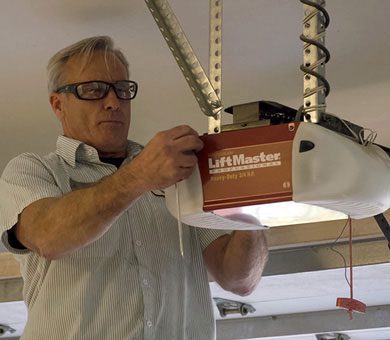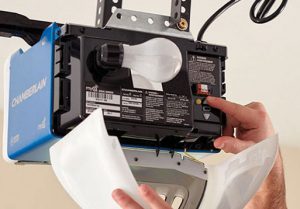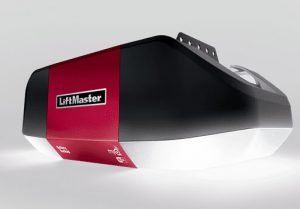GARAGE DOOR OPENER
REPAIR & INSTALLATION in the philadelphia, pa area
High Quality, Reliable Garage Door Opener Repair and Installation Services
- The Most Advanced Openers Available
- LiftMaster Garage Door Opener Installation
- We fix LiftMaster, Chamberlain & Craftsman Openers
- Smart Garage Door Openers
- Experienced and Certified Technicians
- 7 Days A Week Services Available
More than operating your door, garage door openers also ensure your safety by detecting obstructions on the door’s path. At Elite Garage Door Repair, we install first-rate garage door openers like Liftmaster, and repair most types of garage door openers. Our experts are able to solve all door opener problems, including broken gears, malfunctioning sensors, chain and belt replacement, and reprogramming.
Working with high quality brands



GARAGE DOOR EXPERTS
Call us today for a professional garage door opener repair/installation service!
other services
More often than not, you don’t need to install a new garage door opener. Instead, a simple garage door opener repair can fix the problem. Below are some door opener issues that only require repair:
- Broken gear
- Faulty motherboard
- Damaged or missing sensors
- Loose chain
- Non-functional wall unit and/or remote
There are cases where new garage door opener installation may be necessary. This includes:
- When your garage door opener is obsolete and there are no parts available to repair it
- If you have a home inspection before selling your house and you want your garage system to be at its best
- If you want to upgrade to a better, newer garage door opener that has new features such as wifi, battery backup, and camera.
Common Garage Door Opener Issues
If your garage door doesn’t close properly, there may be three possible reasons for this. First, check your garage door alignment if it’s evenly vertical. If not, this will prevent your door from closing normally.
Next, clean and adjust your sensors. This should get rid of any debris that can be read as obstructions and properly position the height of the sensors. Lastly, you might need to adjust the close limit switch on your door opener.
If your garage door produces annoying grinding noises as it moves, a broken gear on your door opener may be the reason behind this. If the gears are stripped, it may cause the gear’s teeth to slip and bump with the chain as the door moves.
Another common garage door opener issue is when it doesn’t respond to your garage door remote keypad or control. In this case, there may be errors in programming and functionalities of your garage door keypad or remote.
As mentioned, if you have an opener reversing feature problem, then you might be in a safety risk when using your garage door. Before anything, have a garage door safety check to prevent any accidents.
When you pull down the garage door emergency release, you’re disengaging the opener from your garage door. As a result, your door won’t open by operating your garage door opener. Instead, you’ll only be able to manually move your garage door.
Our Garage Door opener Repair Best Practices
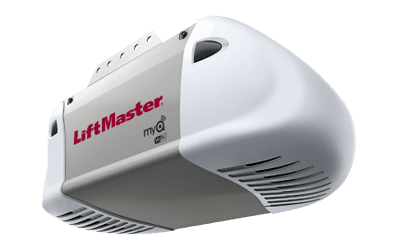
Chain-Drive Garage Door Opener
Chain-Drive openers consist of a chain that moves the trolley (carriage) which connects to a metal bar called J-arm. This bar is then affixed to the garage door. The metal-to-metal contact and vibration may produce disturbing noise, especially if you have a room near your garage.
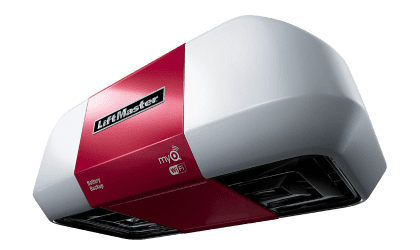
Belt-Drive Garage Door Opener
As its name implies, a Belt-Driven garage door opener uses a belt instead of a chain to move the trolley. The belt, which may be made of rubber, fiberglass, or polyurethane, allows for a more soundless operation. However, belt-driven openers are more expensive than the chain-driven counterparts.
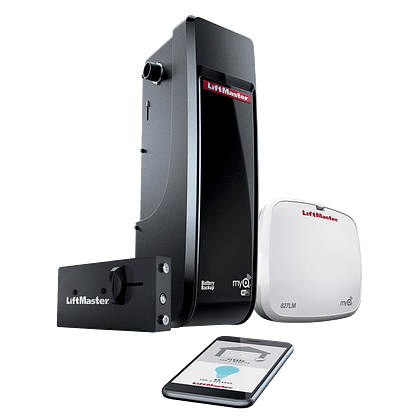
Wall Mount Garage Door Opener
Wall Mount garage door opener is also popularly called the Jackshaft garage door opener. Because it’s wall-mounted, this type of opener is ideal if you want to save vertical space in your garage. This type of opener is mainly installed in commercial garage doors and residential high lift garage doors.
Frequently Asked Questions: Garage Door Openers
Although the average lifespan of a garage door opener is ten to twenty years, this will vary depending on the type and frequency of usage. Some garage door openers will last for more than 25 years if properly maintained. New features, safety features, and so on will continue to be developed, therefore when an existing operator fails down, the cost of repair versus replacement must be considered to determine value of garage door opener repair versus garage door opener replacement.
First, check to see if the garage door opener has electric power. To do this, plug a lamp into the outlet that the opener is plugged into. If it doesn’t light up, then check the fuse box or circuit breaker. Keep in mind that a wall switch may control some outlets. If there is power to the operator but no light bulb, then there may be an issue with mechanical or electrical problem within garage door opener itself and you will need diagnose by a garage door technician. Secondly, have you checked that all locks on garage door are disabled? Is ice or snow build-up under door preventing from opening? The Door could possibly be frozen to the ground.
Check the emergency release cable and try to manually lift the garage door. If the garage door won’t raise, check to see whether the garage door springs are damaged. You can call us for a garage door spring repair or replacement. NOTE: The overload protector in the motor may have been tripped after repeated use. Wait 15 minutes before trying again.
The photo-cell safety beams are either blocked, misaligned, or broken. Examine any obstructions to the signal and ensure that the photo-cell LED lights are on as per the manufacturer’s guidelines. If you can’t close the garage door with your remote control transmitter because the infrared beams aren’t obstructed and the photo-cells appear to be aligned, you’ll need an expert repairman to diagnose and fix the problem. You won’t be able to do so with your remote control transmitter until the photo-cells have been restored to operating condition.
The garage door may be unlocked. Check to see whether the red emergency release cord has been pulled. If this is the problem, re-engage the carriage again. Depending on the model, how to re-engage the carriage will vary. Check your manufacturer’s manual for more information.
It depends on the model, so consult the owner’s manual for further information. The red emergency release cable, which dangles from the mounted overhead opener and can be seen in the photo below, may be used to open the door from within.If your garage door is fully closed, pull the emergency cord downwards to release the door from the carriage. Doing this allows you to operate the door manually. If possible, do not release the garage door when it is open–except for emergencies or security purposes. When opening the door from outside, you first need to install an emergency release lock.
Your garage door is the largest, and probably, the most weighty item in your home. As a result, all of the safety precautions built into the gadget that raises and shuts the door are critical.
Certain safety measures must be put in place for the opener to function. This is true whatever type, size, or brand of opener you pick. These safety devices are built into the garage door system to keep the garage door from closing when an obstacle comes between it and its target. When an infrared beam detects any obstruction in its path, most garage door openers automatically reverse the door. From 1993, the federal government has required all residential, motor-powered garage doors to include non-contact safety defenses. Other security features include:
• Rolling-code technology uses a new, non-repeating access code from among trillions of possibilities every time the remote control is used.
• A garage door keypad or touchpad outside the garage allows access via a preprogrammed code. If this functionality isn’t included in the model you choose, it may be purchased as an extra.
• Some units have a doorbell button for opening and closing the door, while others have a control panel with keypad programming and vacation lock features to prevent unauthorized access when you’re not home.
• The light on the opener will stay on for a few minutes after you enter the house, giving you time to get inside.
• The Battery Backup feature ensures the garage door opener will still function even when the power is out, which helps people during unforeseen and inconvenient power shortages. These units can supply power for up to two days, so after 24 hours of standby time (i.e., a full-day power outage), the garage door opener will still be able to perform 20 complete “up and down” cycles.
Some garage doors come with garage door keypads. If yours does, it may become defective. If you enter the number sequence that has been assigned to the opener and yet nothing happens, there are a few things that could be wrong, including:
Door is locked
If the garage door is locked, double check that the switch isn’t switched to “lock.” If it’s not, input your keypad number again. If it still doesn’t work and you’re able to open garage with switch, then most likely issue is with keypad.
Batteries are dead
Although it may be easy to overlook, most keypads don’t run off of wall sockets — they are battery operated. To keep them running smoothly, you’ll need to replace the batteries every so often. If your keypad isn’t working properly, one solution may be as simple as replacing all of the batteries.
Keypad Is Out of Range
Keypads, unlike wall switches, are not directly linked to the garage door opener. They send a signal instructing it to open, but this signal has a limited range. If your keypad isn’t operational, it’s possible that it was installed too far away from the garage door mechanism. Consider moving closer to operate it.
Photo-Eyes Are Faulty
The problem may be with the photo-eyes if the door isn’t closing. Ensure that there’s no blockage between the two sensors, check that they’re aligned properly, and wipe clean each of their lenses. If you can’t open the door either though, then look for another issue as this one should only affect closing.
Keypad Needs Reprogramming
You can also try reprogramming the code you use to open the garage door with the keypad. You can check your opener’s manual for exact details, but usually it involves pressing a “learn” button on motor and then inputting your desired code on keypad. This process should reset motor to recognize code being sent to it.
Antenna is Faulty
The keypad itself may not be the problem in any of these cases. The garage door opener might not pick up a signal from the keypad because it is sending one properly. There should be an antenna on the motor to receive the keypad’s signal, pointing straight down. Check that this antenna is secure and isn’t pointing in another direction.
If your opener antenna is the root of your problem but you can’t seem to fix it, you can always call our professionals.


